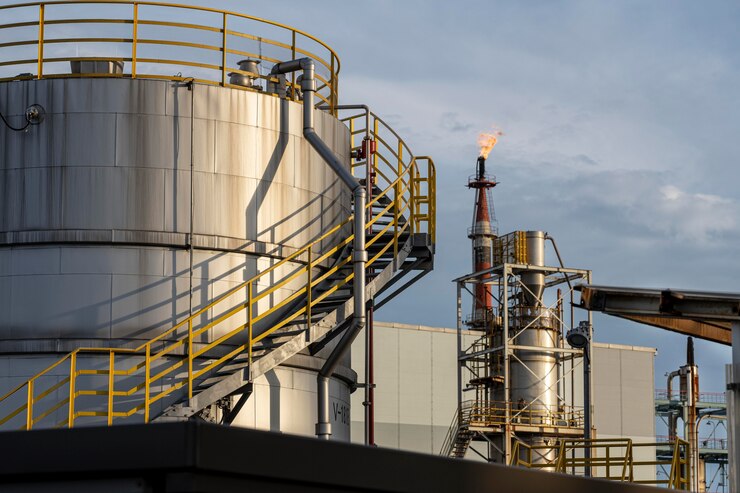
Oil derivation
Jet fuel
Product | Jet fuel |
|---|---|
Packaging | Flexitanks, bulk |
Price | Negotiable |
Payment Terms | Negotiable, T/T |
Delivery Terms
| FOB, CIF, CFR, CPT and FCA |
Min Order
| Negotiable |
HS Code | 271021 |
Jet fuel or aviation turbine fuel (ATF) or ATK (aviation turbine kerosene) is a type of aviation fuel designed for use in aircraft powered by gas-turbine engines. It is colorless to straw-colored in appearance.
Jet fuel is a mixture of a variety of hydrocarbons. Because the exact composition of jet fuel varies widely based on petroleum source, it is impossible to define jet fuel as a ratio of specific hydrocarbons. Jet fuel is therefore defined as a performance specification rather than a chemical compound. Furthermore, the range of molecular mass between hydrocarbons (or different carbon numbers) is defined by the requirements for the product, such as the freezing point or smoke point. Kerosene-type jet fuel (including Jet A and Jet A-1, JP-5, and JP-8) has a carbon number distribution between about 8 and 16 (carbon atoms per molecule); wide-cut or naphtha-type jet fuel (including Jet B and JP-4), between about 5 and 15.
| Analysis | Unit | Limit | Test Method | |
|---|---|---|---|---|
| Densiby @ 15C | Kg/m3 | 751-802 | ASTM D4052 or D1298 | |
| Color Say bolt | - | Report | ASTM D156 or D6045 | |
| Distillation: LB.P 10% Recovered 20% Recovered 50%b Recovered 90% Recovered End point Residue Loss | C C C C C C Vol% Vol% | Report Report 100min 125min Report 270 max 1.5 max 1.5 max | ASTM D86 “ “ “ “ “ “ “ “ | |
| Sulfur Total | m% | 0.4max | ASTM D4294,D1266, 02622,03120 or D5453 | |
| Sulphur Mercaptan | %m | 0.002max | ASTM D3227 | |
| Doctor Test | - | Negative | IP30 | |
| Vapor pressure,(Reid) @ 37.8C | Kpa Psi | 14-21 2-3 | ASTM D323,D4953,D5190 or D5190 | |
| Freezing Point | C | -58max | Astm D2388 | |
| Hydrogen content | %m | 13.5min | ASTM D3701 or D3343 | |
| Heating value heat of combustion | Mj/kg | 42.8min | ASTM D4809, D3338 or D4529 | |
| Aromatic | vol% | 25 max | Astm D1319 | |
| Smoke Point | mm | 20min | ASTM DD1322 | |
| Copper corrosion(2hr @100C) | 1 max | ASTM D130 | ||
| Themmal Stability JFTOT | ||||
| Test temperate | C | 20 min | ASTM D3241 | |
| Tube rating visual | - | Less than 3 | ||
| Pressure differential | mmHg | 25 max | ||
| Water reaction interface rating | - | 1b max | ASTM D1094 | |
| Total acid number | mg KOH/g | 0.015max | Astm D3242 | |
| Particulate matter | mg/lit | 1.0max | ASTM D5452 or D2276 | |
| Filtration time | minute | 10max | ASTM D5452 or D2276 | |
| Fuel electrical conductivity | pS/m | 150-600 | ASTM D2624 | |
| Fuel system icing inhibitor | Vol% | 0.1-0.15 | ASTM D5006 or IP277 | |
| Micro separometer rating | min | Table 1 | ASTM D3948 | |
| Existent Gum | mg/100ml | 7max | ASTM D381 |
| Additive | MSEP rating, min |
|---|---|
| Antioxidant (AO), Metal deactivator(HDA) | 90 |
| AO, HDA and fuel system icing inhibitor (FSII) | 85 |
| AO, MDA, and corrosion inhibitor /lubricity improver(CI/LI) | 80 |
| AO, MDA,CI, LI, and FSII | 70 |
Questions? You’re covered.
Jet fuel is specifically formulated to meet the high energy density and performance requirements of aviation engines. Its low freezing point, high flash point, and consistent combustion properties ensure safe and reliable operation in a wide range of flight conditions.
Jet fuel combustion produces emissions such as carbon dioxide, nitrogen oxides, and particulate matter, which contribute to air pollution and climate change. Research and development efforts focus on reducing emissions through engine technology advancements and the use of sustainable aviation fuels.
The global transportation and distribution of jet fuel involve logistical challenges such as ensuring timely delivery to airports, maintaining fuel quality during storage and transit, and complying with international safety and security regulations. Coordination among suppliers, transporters, and regulatory authorities is essential to ensure the reliable supply of jet fuel to aviation markets.





